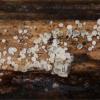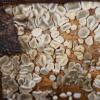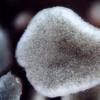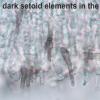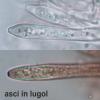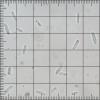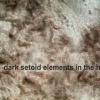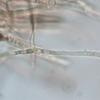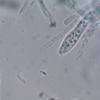
20-12-2025 23:08
Patrice TANCHAUDBonsoir, récolte sur sol sablonneux dans l'arri�

21-12-2025 09:32
Hello.A tiny ascomycete found embedded in wood in

20-12-2025 15:47
Mirek GrycHi.These grew on pine wood that was heavily covere

18-12-2025 21:17
Pol DebaenstThe identification took me to Byssonectria deformi

15-12-2025 07:09
 Danny Newman
Danny Newman
indet. Rutstroemiaceae sp. on unk. fallen leavesMc

19-12-2025 10:10
Patrice TANCHAUDBonjour, récolte réalisée en milieu dunaire, a

18-12-2025 17:23
 Bruno Coué
Bruno Coué
Bonjour,je serais heureux d'avoir votre avis sur c

18-12-2025 18:07
Margot en Geert VullingsThese plumes were found on rotten wood.They strong
Mollisioid fungi on a culm of Apiales
Koszka Attila,
26-12-2021 18:39
Hans-Otto Baral,
26-12-2021 19:14

Re : Mollisioid fungi on a culm of Apiales
I wonder why your free spores are eguttulate and those in the asci guttulate.
In dead state and without excipulum difficult to say. I guess it is a Calycina, because the setoid elements are the Chalara anamorph.
Koszka Attila,
26-12-2021 19:46
Hans-Otto Baral,
26-12-2021 21:27

Re : Mollisioid fungi on a culm of Apiales
Only the spores in the ascus are alive, and the free spore which I consider alien.
The red IKI reaction would be typical of Calycina subparilis. Depends on the spore size.
Substate is Rubus (pentagonal)?
Koszka Attila,
27-12-2021 08:14
Re : Mollisioid fungi on a culm of Apiales
The test material was taken with an insect pin, under the stereomicroscope, directly from the fruiting bodies. Maybe there are free conidiospores with no guttules? If there are anamorph presented, I guess the material is maybe too young... I will re-collect it in a few days.
The substrate is no Rubus, but a plant of Apiales, or maybe a Filipendula, it will come to light next year.
The substrate is no Rubus, but a plant of Apiales, or maybe a Filipendula, it will come to light next year.
Hans-Otto Baral,
27-12-2021 08:31

Re : Mollisioid fungi on a culm of Apiales
The angular shape of the stem excludes an Apiales. Filipendula is very characteristic, this may be possible.
It doesn't look so immature, but if you studied it in dry condition then it may be that many spores got shot away during drying.
The conidia of the Chalara phialidia are much shorter and with an eccentric guttule, so these long and narrow free spores should belong to another fungus.

